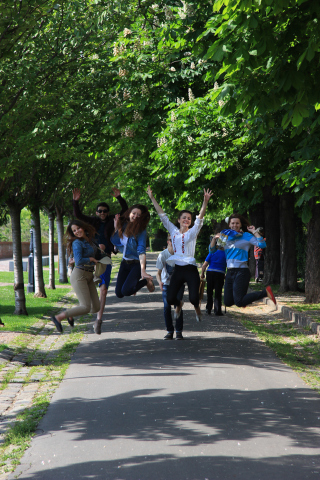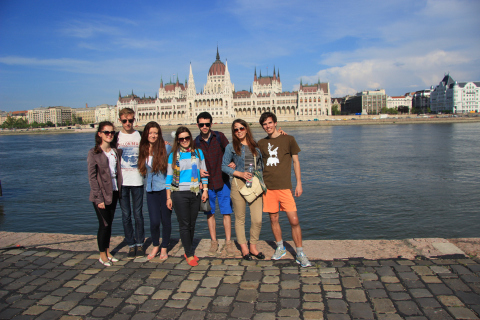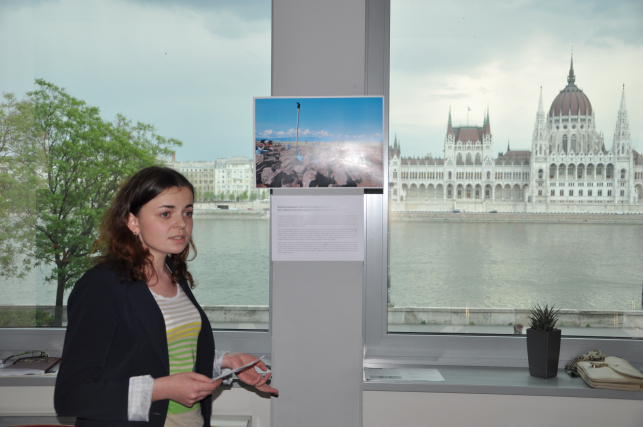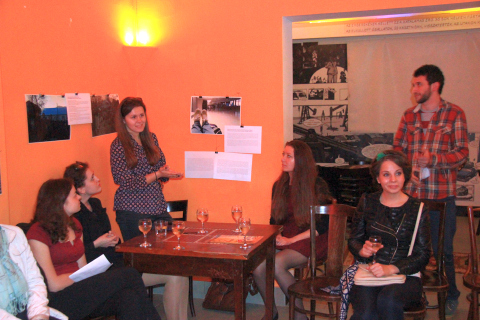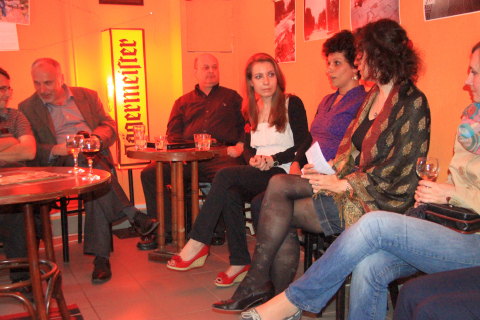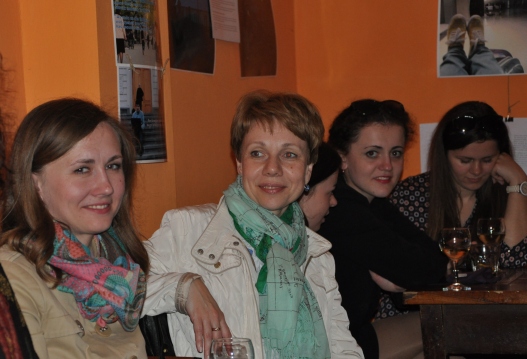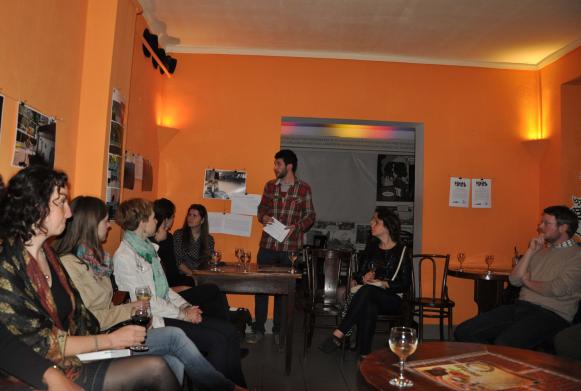„My experience of migration”
PHOTO exhibition
The best participants of the EASTMIG Photo Contest spent three days in Budapest to present their work to the wider public. Participants were: from Belarus Ella Malkevich and Anastasiya Valadashchyk, from Ukraine Kateryna Samsonyuk, from Moldova Olga Sculea and Marina Griscenco, from Georgia Temur Gusughvili and from Slovakia Tomáš Griger. They had the possibility to exhibit their pictures at two different locations in Budapest after the closing conference had finished. One place is called: Rácskert, the other is Macska Café and Gallery. Both galleries are popular meeting places of the youth of Budapest thereby both events ensured the project's introduction to the public, especially to the age group of the participants. Several outsiders were present at the occasions, as well as invited migrants living in Hungary for a while. Vivid discussions took place about the photos exhibited and the phenomena they introduce. The participants also had the chance to develop connections with each other in several fields. Professional debates, friendly discussions and sharing information about the Visegrad Scholarship Program among other IVF projects took place as well. The organisers, Éva Merenics és Ágnes Eross are both Visegrad alumni, together with the participants hope that these events served as an initiation to a broader future cooperation.
*** Migration has become part of our life: studying a semester abroad, working or volunteering in a different country or hosting fellow students and workmates from other parts of the world: only few examples of how one can meet migration in its everyday form. Have you been travelling abroad lately? Above questions all related to migration, the world-wide social phenomenon heavily discussed in scientific, political spheres so as every-day conversations. If you are interested in personal aspects, experiences, memories about migration and home you are welcome to join us on the vernissage of the EASTmig Photo Contest titled “My experience of migration”. Youngsters from Belarus, Georgia, Moldova, Slovakia and Ukraine will present their photos and share their opinions, views about migration. Special part of the exhibition is titled “This is my life” and exhibit photos and essays of Armenian refugee children from Karabakh living in Yerevan, Armenia. Invited guests, partly Armenians living in Hungary will join us and tell their personal memories about home, homeland and homebuilding experiences in Hungary. Rácskert, 1073 Budapest, Dob u. 40. Macska, 1084 Budapest, Bérkocsis utca 23. The event is free and open for public! The exhibition is supported by the International Visegrad Fund V4EaP Programme, and carried out by EASTmig Flagship Project. |
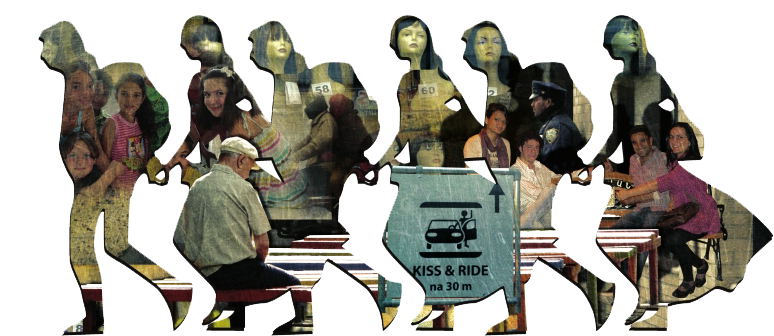
 |
Marina Grischenko, Moldova, Tiraspol, Pridnestrovian Sevchenko State University |
This picture was made at September in International Airport Dulles in Washington D.C. It shows how I waited my comeback home. I was sitting there about 16 hours: night and part of morning. I met there last sunrise in USA, a most wonderful sunrise. This photo is one of my lovely photos. My feelings were amazing; I never felt anything like this before. I have received the migration experience, when participated in international exchange program “Work and travel”, that's why I consider myself to a temporary student migration. Each one of us can try my experience and experience of the same students. It's more important to back in native country with good thoughts and great ideas. |
 |
Malkevich Ela and Valadashchyk Anastasiya, Belarus, Minsk, Belarusian State University |
At first sight this is just a usual photo. However if you look from the other side you can see much tremulous tenderness and love on it. The face of elderly man glows with kindness and warmth. |
 |
Alina Bobrova, 24 years, Moldova |
Migration… This word really means a lot to me. 7 years ago I had a life changing experience of participation in the Future Leaders Exchange Program. Coming to the United States was my big dream. No one believed I could win, but miracles do happen. I went to America for a year and met really close to me people. This picture illustrates the bittersweet moment of me leaving back home. I wanted so bad to scream and cry |
 |
Olga Sculea, 23 years, Moldova, Chisinau |
Today we live a globalised world, meaning that people have the opportunities to experience new worlds and meet new people. I was also one of the lucky students to get the chance to visit the USA in 2010. It is then that this memorable picture was taken by the Escio Fulong family, who has organized a surprise party for my birthday, 25thof July. All of them are present in the picture, and when I look at it my heart fills with happiness and joy, as they have all become dear to me and I will always be grateful for their support and kindness. |
 |
Tomáš Griger, 23 years, Slovakia, Bratislava, Comenius University in Bratislava |
Jana Stefancic is from Alesd, a small town in Bihor county in north-western part of Romania and we´ve been friends for three years. She is studying flute at Academy of Performing Arts in Bratislava, and graduates this year. The fact, that she is studying in Slovakia isn´t such a coincidence, because her ancestors were from Slovakia, and in 19th century they emigrated to Romania with many other Slovaks to find a better place for their living. That´s why some people in north-western part of Romania have close relations with people living in Slovakia and they speak Slovak like Jana does. |
 |
Pavol Stano, 21 years, Slovakia, Bratislava, Comenius University in Bratislava |
Children in this photo represents Slovak minority in Romania (this is specifically from village Gemelcícka (rom. Fagetu) in Bihor-salaj region in northwestern Romania). Slovaks migrated there mostly in 18th and 19th century mainly from Central and Eastern Slovakia (north part of Hungary kingdom at that time). Currently, in this region live about 10,000 Slovaks. These have preserved Slovak language, habits and still have basic education in their mother tongue due to teachers who arrive from Slovakia (elementary school is in the back of the photo). |
 |
Stanislav Styan, 21 years, Slovakia, Bratislava, Comenius University in Bratislava |
In the photograph there is Bozhena from Ukraine standing at the confluence of the rivers Morava and Danube. She is an ambitious and open minded girl, trying to get as much useful experience as possible already during her studies at university. She came to Slovakia through a volunteering programme. She helped at a high school with teaching disabled students English language for two months. It is a great opportunity for young people to be able to live abroad for some time. It was nice to meet Bozhena both as a person and also an eastern European. |
 |
Katerina Samsonyuk, Ukraine, Kyiv, Kyiv National Taras Shevchenko University |
Tuvan archaeological expedition. I was going there for new friends and landscapes that inspire. As it turned out, not only the scenery is inspiring though it was really impressive. I want to dedicate this story to archaeologists. From April to October, in severe sharply continental climate they are doing things they love. Yes, exactly, their labor of love. You would not dig the ground just for the sake of it, in the 40-degree heat or rain and cold, or live six months in a tent far away from the house and civilization. Migrations form the lifestyle for these people. For nearly 50 years archaeologists come to the Tuvan steppe to explore the culture of ancient Scythian nomads. |
 |
Semenko Roman, 19 years, Ukraine, Kyiv, Kyiv National Taras Shevchenko University |
One of the main reasons for immigration is poverty, especially for those looking to move from poor third world countries into the developed world. Another reason that many people will give for immigration is for economic reasons, especially in industries where some countries can be much more advanced and highly paid than others. Education: other countries are attired with a huge range of educational opportunities. Be it top-class universities, high schools, colleges, professional institutes or no matter what, students can get themselves enrolled in any of them in accordance with their preference levels. |
 |
Temur Gugushvili, 22 years, Georgia, Tbilisi, Ivane Javakhishvili Tbilisi State University |
Devastated by emigration: a mountain village in Georgia |

